It Was Good Making Art to the Glory of God
Information technology Was Good: Making Music to the Glory of God ON Sale: ten% OFF.
S  QUARE HALO BOOKS
QUARE HALO BOOKS
My friend Ned Bustard manages Square Halo Books, a boutique publishers in Lancaster, PA, that specializes in books nigh Christian faith and the arts. The books he produces are always nicely designed – his day job is running his own graphic design business firm – and are always a labor of honey. In 2007 they released what has become their well-nigh popular piece of work, a fabulously various and rich anthology of essays well-nigh different aspects of art, and making fine art, Information technology Was Practiced: Making Art to the Celebrity of God (Square Halo Books; $24.99 — on auction for $22.50.) Besides lots of full-color fine art, information technology includes mature and insightful essays by visual artists, Christian art historians and critics, a 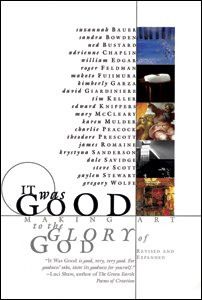 few musicians (pop music producer Charlie Peacock, jazzman and theology professor Bill Edgar), various and sundry other cultural creatives equally well every bit a few who piece of work in ministry with artists (Tim Keller, pastor of the thriving Redeemer Presbyterian Church building in the heart of the arts district in Manhattan, written earlier he became as famous as he at present is.) For what information technology is worth, it showcased the commencement affiliate in a book by the esteemed founder of IAM, Makoto Fujimura, (his good affiliate at that place is called "That Final Dance") and his art wonderfully graced the cover. We here at Hearts & Minds raved about it. Information technology remains ane of the handful of must-read titles nosotros include in any list or display of books about the arts.
few musicians (pop music producer Charlie Peacock, jazzman and theology professor Bill Edgar), various and sundry other cultural creatives equally well every bit a few who piece of work in ministry with artists (Tim Keller, pastor of the thriving Redeemer Presbyterian Church building in the heart of the arts district in Manhattan, written earlier he became as famous as he at present is.) For what information technology is worth, it showcased the commencement affiliate in a book by the esteemed founder of IAM, Makoto Fujimura, (his good affiliate at that place is called "That Final Dance") and his art wonderfully graced the cover. We here at Hearts & Minds raved about it. Information technology remains ane of the handful of must-read titles nosotros include in any list or display of books about the arts.
I think Ned knew all forth that in that location would exist a sequel, i specifically exploring the office of music in God'due south world, IWG2 , and so to speak. Ned is a huge music fan with wide and passionate tastes — it may be that I first met him at a concert or festival. Years and years in the making (an artful story in itself) we could not be more than proud to announce that we now accept It Was Good: Making Music to the Celebrity o 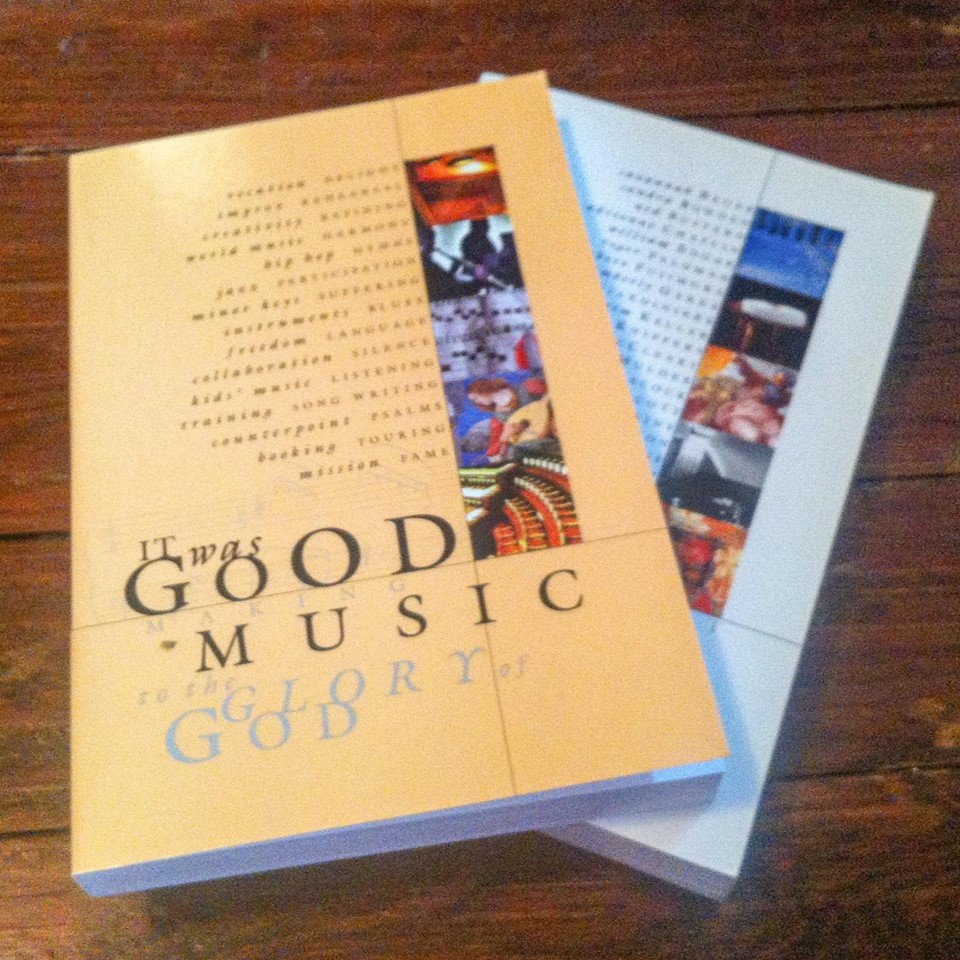 f God compiled and created past Ned Bustard (Square Halo Books; $24.99.) With nearly 30 stellar chapters and 336 pages, it is a beautiful, cute resource, a worthy volume to add to your shelf. If you work in the field of music – music teacher, choir director, aspiring rock star, loftier school band director, worship leader, concert promoter, record producer – you should buy several; you lot only should. It is unquestionably now the best book in the field and you lot volition want to share it with others, often. I predict there will be written report groups and book clubs reading it together in rehearsal halls and choir lofts and recording studios and java shops and Christian education classrooms, wherever musicians gather to dream virtually their work.
f God compiled and created past Ned Bustard (Square Halo Books; $24.99.) With nearly 30 stellar chapters and 336 pages, it is a beautiful, cute resource, a worthy volume to add to your shelf. If you work in the field of music – music teacher, choir director, aspiring rock star, loftier school band director, worship leader, concert promoter, record producer – you should buy several; you lot only should. It is unquestionably now the best book in the field and you lot volition want to share it with others, often. I predict there will be written report groups and book clubs reading it together in rehearsal halls and choir lofts and recording studios and java shops and Christian education classrooms, wherever musicians gather to dream virtually their work.
Feel AMPLIFIED (OR: WHY THIS BOOK IS So Of import)
Permit me to begin my review with a rumination on one of the last chapters in the book, one on booking and promoting concerts called "Feel Amplified" by Kirstin Vander Giessen-Reitsma. Kirstin VG-R writes wonderfully – read her regularly by subscribing to catapult — and in this chapter she tells of the remarkable piece of work of Calvin Higher'due south Educatee Activities Office as information technology brings in thoughtful musicians, songwriters and bands to raise the appreciation of (and discernment near) the popular arts among Calvin College students (and the wider Grand Rapids community who have enthusiastically affirmed their innovative work.) Like the other capacity in Information technology Was Good: Making Music  to the Glory of God , Ms VG-R was given a i-discussion title; in her example, "promotion", and she walks us through the vision, theology, and storied details of booking acts, promoting shows, finding advisable venues, the complexities of ticket sales and hospitality and education and alive concert production. In her vividly portrayed piece she draws us in telling most all the concert posters on the cinder block walls of their grotto-like offices — I've seen those posters in that chaotic office noting advertisements for Dave Matthews, Andrew Bird, Lupe Fiasco, Emmylou Harris, Gungor, Iron and Wine, Mavis Staples, Sigur Ros, the Bullheaded Boys of Alabama, Over the Rhine, Bruce Cockburn, fun., Jars of Clay, Aradhna, Kishi Bashi, Regina Spektor, and many, many more — country to rap to soul to indie pop and more. She notes that the decor is, actually, theological:
to the Glory of God , Ms VG-R was given a i-discussion title; in her example, "promotion", and she walks us through the vision, theology, and storied details of booking acts, promoting shows, finding advisable venues, the complexities of ticket sales and hospitality and education and alive concert production. In her vividly portrayed piece she draws us in telling most all the concert posters on the cinder block walls of their grotto-like offices — I've seen those posters in that chaotic office noting advertisements for Dave Matthews, Andrew Bird, Lupe Fiasco, Emmylou Harris, Gungor, Iron and Wine, Mavis Staples, Sigur Ros, the Bullheaded Boys of Alabama, Over the Rhine, Bruce Cockburn, fun., Jars of Clay, Aradhna, Kishi Bashi, Regina Spektor, and many, many more — country to rap to soul to indie pop and more. She notes that the decor is, actually, theological:
It's a messy witness, tacked to the walls with duct tape and affiche putty, on display for all to encounter and to talk over and to question. The motto of the Student Activities Office (SAO) is "changing the conversation about pop culture" and
fifty-fifty the posters serve this purpose. Merely anyone can stick pieces of newspaper on the wall. Across physical space is where the conversation really heats upward, as live concerts draw people into the circle with all 5 senses. Lights and speakers, instruments and microphones, musicians and fans converge in a big room for just a moment in time and each moment is precious plenty to frame.
But it all begs bigger questions: Why should Christians spend time and money on such activities –and not only as observers, merely as promoters? What, if annihilation, would make a concert venue run by Christians different from other venues? This chapter volition use the Calvin College concert series equally a instance study for reflecting more deeply on the potential for concert venues informed and shaped past holistic Christian values.
M 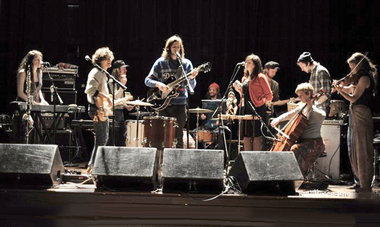 uch of this astonishing chapter is inspired by the leadership of SAO Director Ken Heffner, and Kirstin tells of his vision — inspired largely by the wide-as-cosmos redemptive theology of Dutch Reformed public intellectual Abraham Kuyper. I know a scrap of how this has worked for Heffner and his staff and student team, and know that for them there accept been huge struggles — not everyone in the religious community understands the risks and blessings of the best popular art or the theological insights of mutual grace, and not everyone in the creative community trusts or appreciates the conversations going on in places like Calvin Higher; some mainstream artists and managers and journalists, in fact, are unsure about their efforts to nurture Christian discourse, confusing their views with the censors of the religious right, perhaps.
uch of this astonishing chapter is inspired by the leadership of SAO Director Ken Heffner, and Kirstin tells of his vision — inspired largely by the wide-as-cosmos redemptive theology of Dutch Reformed public intellectual Abraham Kuyper. I know a scrap of how this has worked for Heffner and his staff and student team, and know that for them there accept been huge struggles — not everyone in the religious community understands the risks and blessings of the best popular art or the theological insights of mutual grace, and not everyone in the creative community trusts or appreciates the conversations going on in places like Calvin Higher; some mainstream artists and managers and journalists, in fact, are unsure about their efforts to nurture Christian discourse, confusing their views with the censors of the religious right, perhaps.
So, for case, he ended up on the phone last year with i of the members of a globe-famous band, literally while they were rehearsing at the famed NBC studios before their SNL gig talking through painful misunderstandings; his intentional and artist-savvy conversations about Calvin's distinctive worldview with top-tier artists and their direction have sometimes gone tardily, late into the night and connected long later the artists accept left the campus.
They accept worked difficult to generate trust and wisdom about how to host artists, which to avoid and who to piece of work with, who to nurture and what boundaries to be clear about. It has been difficult, yep — with very few models at any other colleges being so intentional and discerning in this way.
But in that location have also been great, cracking joys, some of them sowing seeds of gospel hope among musicians who are amazed that this small religious campus cares so very much nigh the arts, about popular culture, and nigh hosting and producing an first-class prove in a quality venue.
Globe famous, Grammy Award winning indie ring Death Cab for Cutie last twelvemonth made it a point to note that they could have played at other more than lucrative halls, but knew that Heffner's squad treats them well and — fascinatingly — their students pay attending, affectionate the artfulness of the show, engaging the music equally if it is, well, a gift made possible by a adept God; by some accounts, SAO audiences are the all-time of any crowds on a performer's entire bout. A rare culture of engagement in popular music has adult over time at that place, and fifty-fifty secular artists are caught upwardly in moments of grace equally audiences participate appropriately.
I SAY ALL THIS BECAUSE…
Information technology seems to me that at that place are hundreds of faith-based and church-related colleges and 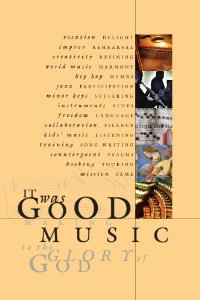 thousands of churches that host concerts, and notwithstanding very few have risen to this sort of conversation about the role of popular amusement, seeking a coherent and true-blue understanding of gimmicky music, nor have many really been intentional about considering a set of uniquely Christian practices near appreciating music in all its many-splendored textures and tones and styles.
thousands of churches that host concerts, and notwithstanding very few have risen to this sort of conversation about the role of popular amusement, seeking a coherent and true-blue understanding of gimmicky music, nor have many really been intentional about considering a set of uniquely Christian practices near appreciating music in all its many-splendored textures and tones and styles.
The singular witness of Calvin'southward SAO series — told so helpfully in Vander Giessen-Reitsma's chapter — is brilliant indication of simply why It Was Good Making Music to the Celebrity of God is then very of import.
This book is a delight to read, a joy, thrilling even, if you are a music lover. Just, also, it is of import.
Ane MORE TIME: RESISTING SACRED/SECULAR DUALISMS TOWARDS A MORE FAITHFUL VIEW OF THE ARTS
And so, from this wonderfully-written chapter nigh this esteemed programme virtually the cease of the book we are reminded of a theme that most serious Christian artists intuit and need to learn to amend clear, a theme that arises quickly in both It Was Skilful books — there is no necessary division betwixt the and so-chosen sacred and secular; church music is not necessarily more "spiritual" than a love song or hoedown, God is honored and gladdened by faithful music of any sort, not just congregational or sacred music.
Practiced art, guided past the spirit and values and vision of the creative person, pays homage, more or less allusively, to a fashion of seeing life, a way of believing about life and in that sense all fine art is fundamentally religious (of one organized religion or another.) Art or music that is intentionally Christian can nonetheless exist bad art, and goodness and truth and wondrous artfulness can be establish in the most profane of work. In God's practiced grace, nosotros live in a world of color, texture, sound and rhythm, and we tin, indeed, brand all style of music to God's greater glory.
Such humane and God-glorifying song, again, can be a child's song virtually belly-buttons  (as ane of the great chapters here tells united states of america) or a politically-charged bit of social criticism or it can be a liturgical chant or a passionate praise chorus. All such songs (the child'southward song or the liturgical slice) can exist well-made, insightful, healthy and proficient, or can exist poor, shallow, harmful, and bad.
(as ane of the great chapters here tells united states of america) or a politically-charged bit of social criticism or it can be a liturgical chant or a passionate praise chorus. All such songs (the child'southward song or the liturgical slice) can exist well-made, insightful, healthy and proficient, or can exist poor, shallow, harmful, and bad.
That kind of boggling reminder of a glorious whole-life Kingdom vision which affirms the presence of God in mutual grace throughout all of life and civilization is simply one of the bang-up reasons to relish this marvelous, and marvelously idea-through collection.
GLIMPSES
Reading It Was Good: Making Music to the Glory of God you volition take hold of glimpses of that "every foursquare inch" / all-of-life-being-redeemed vision lived out, explained and explored every bit many solid folks bear witness to the role of the practiced gift of music in their lives. You will savour hearing a fleck virtually producing The Ceremonious Wars and a lot about counterpoint in Bach; yous get a grand workshop on the history of jazz, some other on the spirituality of the dejection; and y'all'll learn about the hymn-writer who penned the beloved "In Christ Lonely."
Y'all will enjoy hearing virtually music in the life of parents and children and you volition consider the rigors of those who perform equally a vocation. At that place are chapters near what the Bible says well-nigh vocal and at that place are capacity about how to be more artfully engaged in appreciating music — in church and in the remainder of our lives, exterior of the sanctuary doors. Square Halo Books has done united states of america a great service in enriching our lives by offer us this brilliant conversation into which we are invited. It is, in my apprehensive view, one of the best books we've read in years — in office because information technology helps u.s. think about faith in such a downwards-to-Earth, applied way.
As Bustard says in his first-class foreword,
We were made to sing to the glory of God. He deserves celebrity from us due to his majesty as well as his kindness to us. Some see an obligation to glorify God as a burden or limitation. But this is simply not the instance. Living lives to the glory of God makes u.s. more of who we are. It is the difference between merely existing in black and white and taking in all of life in full technicolor.
SO MANY STYLES
I 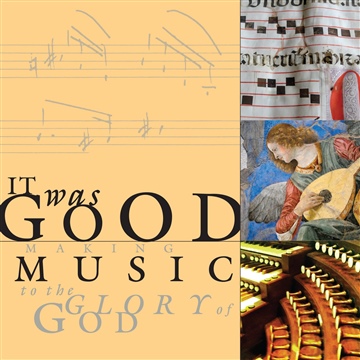 n Information technology Was Good: Making Music to the Glory of God , thoughtful Christian singer/song-writers in the Americana/pop vein talk about learning their craft, about how to write, most collaboration and touring, even as classically-trained church leaders ruminate on their piece of work (run across the brilliant chapter on rehearsal past the Music Manager at Redeemer Presbyterian Church building in New York.)
n Information technology Was Good: Making Music to the Glory of God , thoughtful Christian singer/song-writers in the Americana/pop vein talk about learning their craft, about how to write, most collaboration and touring, even as classically-trained church leaders ruminate on their piece of work (run across the brilliant chapter on rehearsal past the Music Manager at Redeemer Presbyterian Church building in New York.)
Some capacity tend towards anecdotal entries that are interesting and entertaining such every bit Charlie Peacock's reflection on his amazing career, a truly remarkable interview with hip hop artist and producer Shai Linne, Diana Bauer'due south powerful telling of how music helped her in times of great sorrow — one of the all-time in the volume! — and a wonderful interview with Keith Getty (composer of beloved contemporary hymns, almost notably "In Christ Solitary.")
There are many more specialized chapters, focusing on Biblical study or a item topic (collaboration, minor keys, participation, fame all of which are tremendous.) There are no tidy lines between genres, and in that location are pieces about music created for worship purposes — like a learned chapter on singing the Psalms — and many on the musical piece of work done for pop entertainment and operation. Some seem to be written for musicians, although as a non-musician, some of these were amongst my very favorites.
For instance, I admittedly loved Vito Aiuto'south chapter on songwriting and Sandra McCracken's splendid and homey piece on creativity and Drew Holcomb's reflections on touring.
Actually, there is a whole lot for non-musicians, for those of u.s. who heed to recordings, have in live shows, or just sing at church building or in the shower. For instance, Katy Bowser'southward piece on children'due south music is absolutely excellent (the best I've even seen on this topic — I hope you know we stock her Coal Train Railroad CDs and the lovely Rain for Roots: Large Stories for Little Ones CD.) What a thoughtful, inspiring chapter, a so fun to read.
The brilliant, profound piece of work on the aesthetics of please written by Bethany Brooks is fantastic. She is an accomplished classical pianist (who plays all over the world) who likewise is active in the roots music scene in Philly. Oh yes, she besides is a music director at City Church there. Anyway, it is a very, very impressive chapter and musicians and music lovers should reflect upon. It is one of the most important pieces centering the whole IWG project.
Stephen Nichols' wonderful telling of the life of Johnny Greenbacks becomes a flake of a morality tale most fame, and is a care for to read.
Jeremy Begbie is spot on when he says on the back-cover that "this book shows that it is still possible to write about music in a manner that enriches our feel of information technology. Above all, information technology volition renew your gratitude to God for making such art possible."
A REMEDY
Information technology is interesting, isn't it, that music is effectually usa so very much, simply nosotros often fail to attend to information technology with much focus, and nosotros rarely discuss information technology together, reflecting on true-blue expressions and fruitful understandings. Nosotros get upset when pop stars practise hare-brained stuff and we renounce this or that trend, or mutter nigh music we didn't like in church building. We plough the car radio up or down as the case may be. Simply, besides rarely practice we pursue the kinds of good conversations every bit given to us in this book. Yep, this book is indeed a souvenir. The editor, the publisher, and the authors are to be commended for this labor of love.
It is notable when a volume garners eloquent and passionate endorsements and this book already is gathering just such glowing recommendations. Listen to stone and roller Dave Perkins, now Acquaintance Director of the Religion in the Arts and Contemporary Culture program at the Divinity School of Vanderbilt:
Is it possible to fully elucidate the spiritual, emotional, intellectual, fifty-fifty physical experience of music making? Mayhap the all-time way to go nearly it is to gather a choir of voices. Information technology Was Skillful: Making Music to the Glory of God offers a rich resources of perspectives, each working to share some aspect or moment in the experience of that mercurial characteristic of human being we call music and its place in the life of faith.
The volume covers so much good ground that it is hard to draw — I just want to offer this plea that you buy It Was Good: Making Music right abroad! (It will, of class, make a fabled Christmas gift, as does the showtime IWG volume.) I promise that our readers will trust us on this one.
Encounter MY LONGER REVIEW EXPLAINING EVERY CHAPTER
I don't desire to miss out on the joy of explaining some of what is to exist found betwixt these cool covers. In that location truly are some amazingly interesting topics and some pretty stellar authors.
Then, delight bear with me as I give the shout outs. I imagine them all lining upward as after a prove, hands clasped, bowing in unison before the encore. I wanna be the emcee and call out with gusto "Ladies and gentleman, give it up one more time for…."
Y'all tin can read the rest over at the Hearts & Minds website monthly column.
I give a brusk paragraph nigh each and every chapter, by whom it is written, what information technology is about, and why I liked it so. There isn't a bad one in the bunch, so we're going to clap long and difficult for these folks, and past the stop y'all'll be holding upwards little lighters shouting "Encore!"
BookNotes
SPECIAL
Disbelieve
10% OFF
It Was Skillful: Making Music to the Glory of God
It Was Good: Making Art to the Glory of God
sale price but $22.50 each
order hither
takes you lot to the secure Hearts & Minds order form folio
just tell us what you want
ask hither
if you have questions or need more than information
just enquire united states what yous desire to know
Hearts & Minds 234 E Main Street Dallastown, PA 17313 717-246-333 3
read@heartsandmindsbooks.com
Source: https://www.heartsandmindsbooks.com/2013/10/it_was_good_making_art_to_the_1/
0 Response to "It Was Good Making Art to the Glory of God"
Post a Comment